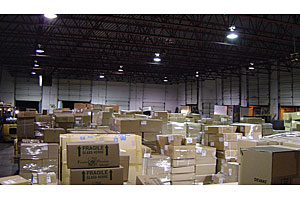The list of competitors is growing, as are the tactics they are using to take customers from traditional PHCP and HVAC supplies/parts supply houses. Even PVF supply houses that sell commodity small valves and pumps are under attack.
But there are methods that traditional supply houses can use to cost-effectively fight this latest move.
Amazon (not Amazon Supply, yet), Grainger, McMaster-Carr, MSC Industrial and eBay (did you know they are a competitor?) all offer some form of
extra-cost fast delivery, including same-day, not just next day. Some sellers on B2B trading sites offer fast delivery. In addition to using FedEx, UPS and USPS ground services, some of the giants use local commercial delivery services and the hottest form of logistics — local freelancers, sometimes called outsourced couriers (that usually function as cabs).
Traditional supply houses that do their own deliveries should investigate using outside services, both established and new types of fast delivery services. When investigating, look for potential problems as well as realistic savings and benefits. But large-scale fast delivery requires quick picking, packing, etc., and the giant competitors know that and use warehouses and software designed for ongoing quick fulfillment.
As part of the investigation, traditional distributors must determine whether the warehouse is capable of routinely handling orders that would be shipped/delivered much faster than they are now — in addition to accurately handling the scheduled picking and shipping/delivery that is occurring now.
Warehouse operations
Start by thoroughly evaluating all warehouse processes, because many affect the ability to very quickly deliver or ship. In particular, determine the following:
Are items being stored immediately after being received and verified correct, placed where they belong, and related data updated immediately after the items are put away? It’s impossible to quickly pick and deliver items that are ordered for quick delivery if they are not available for picking, even if the system shows they are somewhere in the warehouse.
Would the ERP system support the large-scale quick-picking of items ordered for quick-delivery, and is the warehouse arranged in a way that enables quick picking, packing, verifying and loading while “normal” activities are occurring? If a quick-delivery order were to require picking from overflow or bulk, could that occur without disruption of non-expedited orders?
Could quick-delivery orders be verified twice? Double verification is essential because some customers who order for quick delivery do so because an item is needed “yesterday,” and would be very angry if they received a wrong item and paid extra to get it quickly.
Is inventory data super-accurate, or would it be necessary to do cycle counting in order to support a large-scale quick delivery operation? Does the ERP system support cycle counting and would normal activities not prevent accurate cycle counting? That previously mentioned potentially angry customer would be furious if told when placing the order that an item was in stock only to be called later and told “the system was wrong” and there is none in the warehouse.
If the current rate of picking errors is high and barcode scanning is not being used, would barcode scanning facilitate large-scale accurate quick picking and double verification? When answering this question, be aware there have been situations where barcode scanning did not reduce picking errors to an acceptable level.
ERP and WMS
If there are several places where the ERP system would not support large-scale quick delivery in addition to scheduled activities, it may be necessary to obtain a new one. This may be necessary even if a decision is made not to offer quick delivery.
Even if the ERP system supports most of the processes needed for large-scale quick delivery, a warehouse management system should be considered. A WMS contains functions that can reduce the time to pick, making quick delivery even faster; for example, the ability to determine the quantity to pick from each of one or more pick slots and/or the quantity to pick from each bulk or overflow location. Few ERP systems do this and manually making this determination is the opposite of “quick.”
Warehouse automation
In addition to evaluating warehouse operations and the ERP system, look into warehouse automation technologies that reduce picking time and ensure the success of quick delivery.
Voice-directed picking refers to a voice-recognition and synthesized-voice-response system that enables hands-free, paperless picking, which clearly saves time. Each user wears a device with earphones and a microphone and he or she “teaches” the device to recognize his/her speech patterns. The main ERP system transmits to the VDP server data about each order ready to pick and the server transmits data to a specific device, which tells the wearer where to go to and what to pick. The wearer does the picking and then “tells” his/her device what was picked.
Automated material handling devices range from relatively low-cost electrically powered conveyors to expensive automated storage and retrieval systems. One example of ASRS is a carrousel-like device with rows of storage pockets at several heights around its circumference. Special software controls the retrieval of an item, which can be retrieved and ready to take away before a picker even gets to the carrousel — much faster than a forklift or manlift.
The use of fast delivery services is a tactic traditional supply houses can use as easily as giant and new forms of competition. But the distributor’s warehouse must be capable of supporting large-scale quick picking, as must its ERP system, or it would not be possible to consistently provide customers with quick delivery of product.



